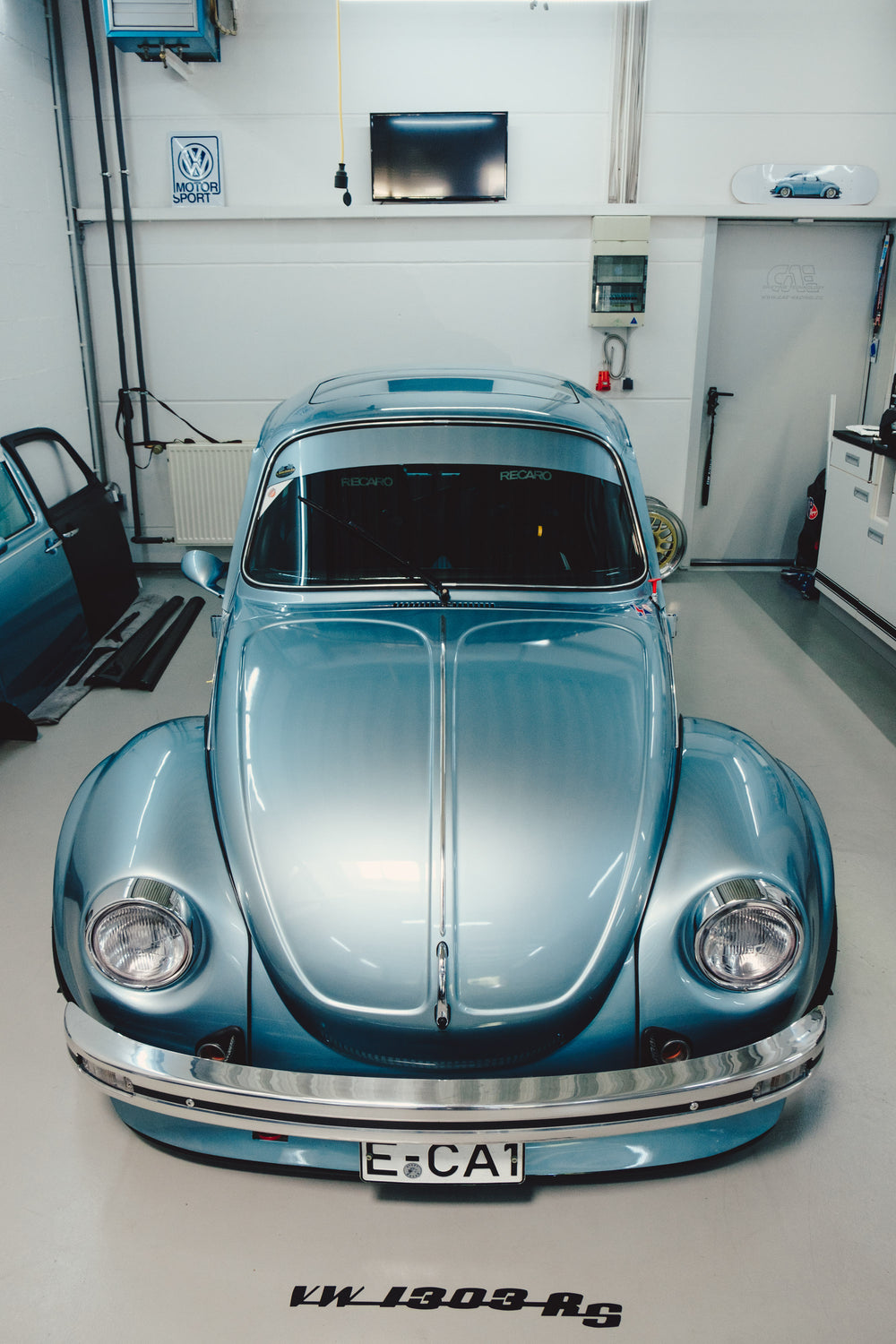The original Volkswagen Beetle is something of an automotive tabula rasa. It’s an ingeniously simple design that was produced for over 60 years and resulted in more than 20 million examples, making the Beetle as close to ubiquitous as a car can be. And the natural effect of these sheer numbers has been a nearly universal access to this platform for anyone who’s interested, which over the years has manifested in all manner of subcultures within the car community repurposing and reshaping the Beetle to fit their visions.
In essence, this car has been the platform for just about any type of build you can think of. Even in its unmodified factory forms, the car readily bends to whatever context it’s placed in—just picture a menacing black split-window in a rainy grey German cityscape versus a bright orange one that spends most of its time ferrying surfboards between beach and bungalow.




It’s the modified cars that really exemplify the blankness of this canvas though. There are the so-called SoCal-style Bugs with heavily raked postures, more metal flake than a bass boat, and more chrome than a Cadillac twice their size, and on the other side of the ground clearance spectrum you’ve got your jacked-up, rock-hopping Baja Bugs adorned with enough skid plates and bash bars to carve out an existence in Mad Max’s version of Australia.
There are also those who’ve transformed the People’s Car into a track car, but while the majority of circuit-prepared Beetles are sort of tongue-in-cheek by nature—an essentially 1930s design will never be on the cutting edge of performance—there are always exceptions.






This car, playfully referred to by its creator as a “VW 1303 RS” (a nod to both this car’s rennsport influences and Porsche’s naming convention), is not just a standout among the members of its massive family tree however. This is a seriously impressive car that doesn’t need caveats or comedy to explain its existence. The amount of hours and energy that Christian Stelzer has funneled into this project can be seen as a product of his ongoing life’s passion for racing and motorsport-focused engineering.
It’s impossible to pinpoint any meaningful beginning to an obsession with cars when said obsession is as complete as Christian’s, but we can rewind the timeline to his first car, which was a light blue Volkswagen Beetle. He was 18 years old when he bought it, and while any car will be rightly cherished if its the very first you’ve owned, it’s clear that Christian’s Beetle left a bigger impact than is usual. It is also worth mentioning that his father and older brother both drove Beetles before Christian got his, so perhaps there’s a hereditary component to his love for the Bug.




As stories like these often go, Christian moved on to different cars as his interest and bank account grew out of his teenage years, with the VW being relegated to a fond memory of simpler times and youthful freedom. A motorsport fan living in Germany is wont to end up at the Nürburgring on a pretty regular basis, though, and after one of these trips Christian found himself in dire need of another Beetle. He’d just spent the day watching the Käfer Cup (“Beetle Cup”), and decided that he wanted to build his own motorsport-inspired version.
He was set on finding a Beetle painted the same color as his first—Marathon Blue—but the eventual outcome would be about as far from a “first car” spec as possible. Knowing the extent of the project beforehand meant he wasn’t too picky about the condition of the base car, and it didn’t take long for Christian to find a Marathon Blue 1973 example in need of some attention. He proceeded to tear the whole car down to its base components, and got to work building from the chassis up. It’s a project that’s taken years to complete, but it’s also the type of ongoing, always improving build that keeps evolving. A raft of race car parts found their way onto Christian’s Beetle, and whenever he found a lack of aftermarket support or ran into hurdles adapting parts to fit, he simply engineered his own. To describe the full extent of what’s been done to reach this point would be an exercise in making a very long and technical list, but if the photos don’t convey just how mental this thing is, there are some highlights to help color in the picture.





For starters, the motor is a heavily modified Type 4 swap that Christian has enlarged to a comparatively massive capacity of 2.6 liters, which is fed by a pair of Weber 48 IDA dual-throat downdraft carburetors. Together with a Shleicher camshaft which helps raise the compression above 11:1, the dry-sumped air-cooled motor produces 210hp. That’s not a staggering number in absolute terms, but when you consider that it’s almost three times as powerful as it was in stock form, and that it’s propelling a car that weighs in comfortably below the 1800-pound mark, you can start to get form an idea of how quick this car is.
Seeing as literally every nut and bolt of this Beetle has not only been replaced, but also scrutinized and carefully chosen by Christian to save weight, the chassis and suspension components are at least as impressive as the powertrain. Adjustable Koni struts are up front, while Bilstein holds up the rear, and Eibach double springs are on all four corners, while the sway bars and other bracing are fitted with beautiful aluminum and titanium components to attach them to the chassis. The trapeze-type stabilizers in the rear are an adjustable design, as are the Porsche-esque cross bars under the frunk. And all this adjustability does not go to waste either, given that Christian regularly brings his Beetle out for on-track exercise at circuits like the Salzburgring, Hockenheim, Spa, and of course the Nürburgring Nordschleife.





Like any thoughtfully and thoroughly built track car, Christian hasn’t neglected any aspect of this Beetle—as evidenced by the massive AP Racing four-piston calipers hiding behind the magnesium BBS E49 wheels—but unlike most track cars, this one is clean enough to park on top of a mirror at a car show. Given that Christian has made a career at Mercedes-Benz working in body development—to say nothing of his direct and constant involvement with privateer and amateur motorsport—the bodywork of his Beetle is materially different than a standard model—both literally and figuratively, seeing as many of the panels are carbon fiber recreations.






The sunroof has been plugged with a plane of carbon fiber, the dashboard retains much of its original shape but has also been replaced with a lighter carbon piece, as are the second set of doors that can easily be swapped in and out. The fenders have of course been augmented outwards to accommodate a wider track, and if you’d believe it, almost all of this is TÜV approved. Though given the car is often wearing racing slicks and has a distinctly “not-low” decibel exhaust setup, Christian doesn’t wish to push his luck.
But no matter the company it finds itself among, this Beetle has more than earned its rennsport designation, and while we’ve all probably made the hackneyed joke about 911s being glorified Beetles, this particular one has surely passed its share of Porsches in the Green Hell too.

























































